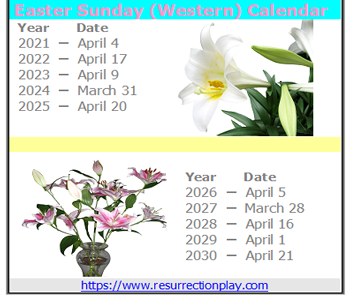
Unlike many other holidays, where the date never varies year after year, such as Christmas, or where the date is based on position on the month, just as Thanksgiving is the fourth Thursday in November, Easter has a date that can be in one of two months and seems to jump around with little meaning. However, with a little understanding of how this date is determined, you will see that the Easter calendar has a sense of rhyme and reason.
Lunar Guidance
The dates that the Easter calendar will fall on in any given year are determined not by the number of days after Christmas or anything like that, but are instead based on the phases of the moon, and have a basis in astronomy. The traditional way to determine where the Easter calendar will fall is to wait for the first new moon on or after the vernal, or spring, equinox, and count fourteen days after that, which is termed as the ecclesiastical full moon.
Keep in mind that the ecclesiastical full moon does not always coincide with the precise day as the actual full moon. For all intents and purposes, the new moon is considered to be the first appearance of a sliver of moon in the sky after the traditional full moon.
Differences In Calendars
The dates that the Easter calendar falls on are determined by the vernal equinox, but once again, religious definitions differ from scientific ones. The vernal equinox is determined scientifically by the number of hours in the day, but for religious purposes, this date is fixed as March 21.
Of course, the reason that the Easter calendar will not always fall on the same dates each year is that the moon follows a 28 day period, while our months vary from 28 days to 21 days. Thus, in the event that the ecclesiastical full moon occurs on March 20, there will be a bit of a wait for Easter. Because of variations, the earliest calendar date that Easter can fall is March 21 and the latest it will ever be is April 23.
As a final twist, there is a difference between Catholic and other Western Christian religions and those of the Eastern Orthodox religions in the calendar date that Easter will fall on. This is due to the fact that the Catholic Church and other Western churches go by tables that work with the Gregorian calendar, which is the calendar we use today.
However, for religious purposes, the Eastern Orthodox religions use the Julian calendar, which does not have exactly the same dates. It’s just one more quirk in the complexity of determining the Easter calendar.
